Arizona is home to an amazing variety of parks, each of which is unique in its own way. National parks and monuments include everything from magnificent canyons to endangered desert ecosystems, prehistoric forest ruins, and even historical sites.
From the extreme north to the Mexican border, the state is covered in national parks and monuments. Fortunately, many of them are clustered together close to major cities, making it simple to visit more than one in a single day.
10 Best National Parks and Monuments in Arizona
Alternatively, if you’d want a little extra luxury, stay at one of Tucson’s greatest resorts in Arizona and take a day excursion to locations like Saguaro National Park or Organ Pipe Cactus and Chiricahua National Monuments.
Our ranking of the top national parks and monuments in Arizona might help you plan your next excursion.
1. Chiricahua National Monument
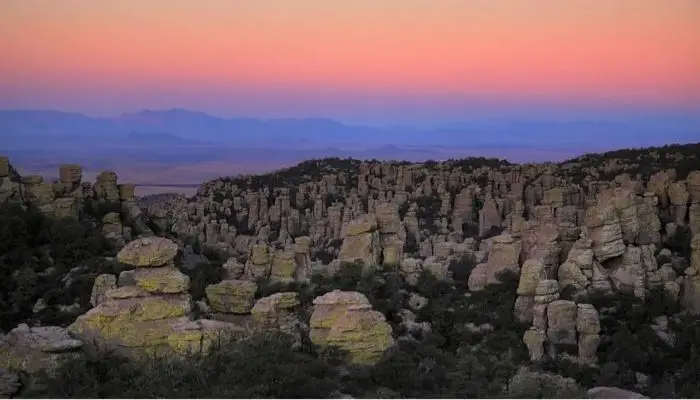
The Chiricahua National Monument, which is found in Arizona’s southeast, is home to an unusual forest of rock formations. The park, which is also known as the “Wonderland of Rocks,” covers 12,025 acres of wilderness.
The hiking trail via Echo Canyon Loop is one of the attractions of a trip here. You can reach the centre of the rock formations on this 3.3-mile trek, which takes roughly two hours to complete. Along the way, you’ll pass noteworthy locations including Wallstreet, the Grottoes, and Echo Park. You avoid a very steep section of Echo Canyon, make sure to complete the loop in the opposite direction.
Shorter routes are available for individuals who don’t enjoy strenuous activity, or you can just drive up Bonita Canyon to the Massai Plateau’s vantage point. A lovely campground with 25 sites and one group site is available in Chiricahua National Monument if you want to stay a little longer. The campground is surrounded by imposing oak and pine trees.
2. Montezuma Castle National Monument
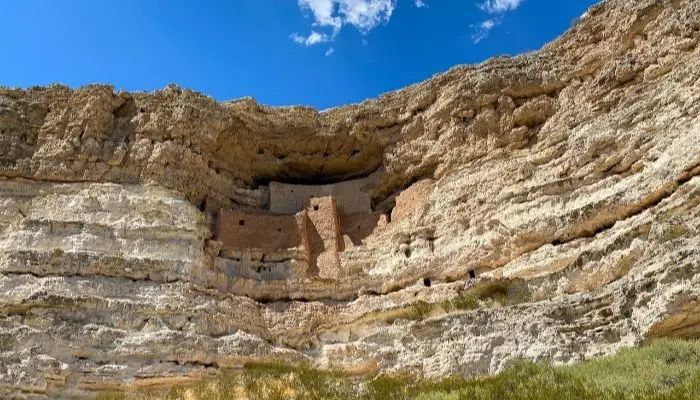
In close proximity to Camp Verde, a tiny town, and Sedona, a popular tourist destination, is where you’ll find the Montezuma Castle National Monument. The well-preserved ruins of a more than 900-year-old ancient village can be found here. The past inhabitants of the cliff houses were able to avoid floodwaters, keep a watch on approaching visitors, and escape the arid desert weather since they were strategically hidden under a large rock overhang.
A paved, half-mile trail leads to Montezuma Castle. Large trees along the route offer plenty of protection from the unrelenting Arizona sun. There are educational displays throughout the route that give background information on the area and its residents. The walk circles back to the visitor centre after passing the cliff homes.
3. Walnut Canyon National Monument
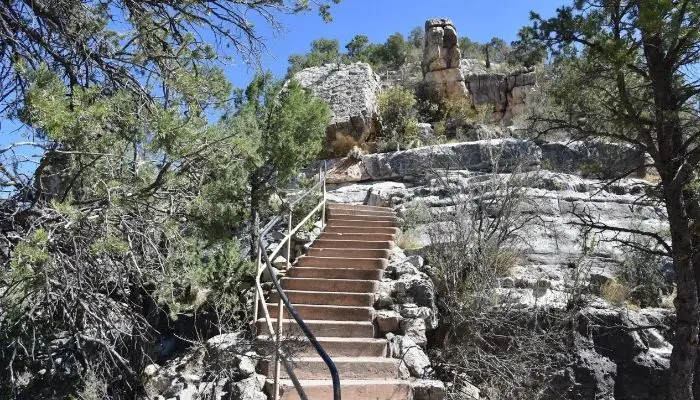
A national monument close to Flagstaff called Walnut Canyon National Monument is frequently disregarded. The national monument is home to two great climbs that showcase old homes, but they are more geared toward individuals with a little bit of an adventurous spirit.
Before selecting which hike you’ll attempt, stop by the tourist centre. The Island Trail is the best choice for individuals who can manage 736 stairs and are in average physical condition. This one-mile journey winds past 25 prehistoric settlements thought to be at least 700 years old as it drops 185 feet into the canyon. Along with the houses, the trail provides good views of more houses over the canyon bottom.
4. Wupatki National Monument
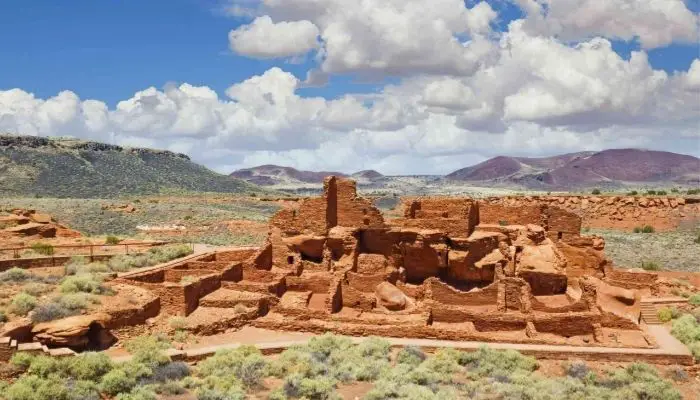
The culturally significant Wupatki National Monument is a short distance further south along Highway 395 from Sunset Crater National Monument. The monument is an intriguing location where several dozen old Puebloan villages that have been partially rebuilt can be found.
This is a harsh land with long winters, freezing nights, and hot days. It’s difficult to imagine how the prehistoric inhabitants of this area managed to survive as you tour the pueblos.
The Wupatki Pueblo is the monument’s principal draw. It formerly had more than 100 rooms, according to researchers, and is thought to be older than 900 years. Today, a half-mile round-trip stroll on a paved pathway is all that is required to get there. The route offers breathtaking views of the Painted Desert.
5. Sunset Crater National Monument
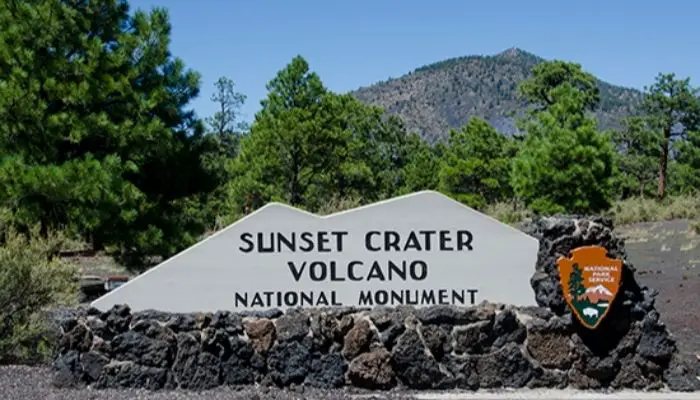
A spectacular world of volcanoes, lava tubes, and cinder cones is located not far from Flagstaff. The San Francisco Volcanic Field, which surrounds the region currently known as Sunset Crater National Monument, once included more than 600 volcanoes.
The enormous peak that dominates Flagstaff from behind you, soaring 12,637 feet above it, is actually a dormant volcano by the name of Mount Humphreys.
A wonderful family vacation spot, Sunset Crater National Monument offers a wealth of fascinating natural wonders. Take the mile-long Lava Flow Trail across an old lava field to get the best view of the park. Don’t forget to bring your dog along; on the paved area, animals are welcome.
6. Petrified Forest National Park
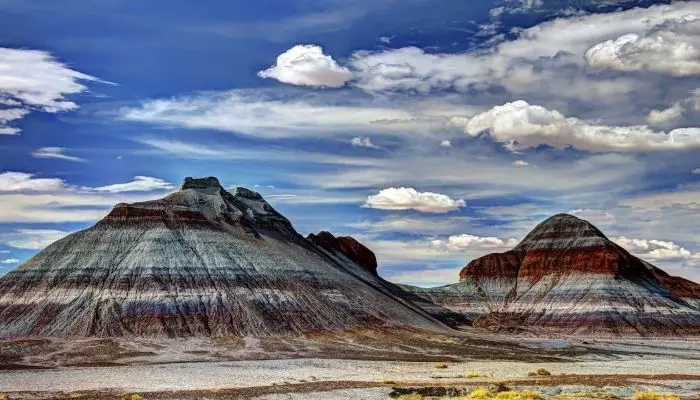
While driving along Interstate 40, you may have seen the signage for Petrified Forest National Park and thought, “That seems like a cool destination,” but you haven’t had time to pull over. So, the next time you’re in the high desert close to Holbrook, stop in and get ready to be amazed.
The Triassic Period, which occurred right before the more well-known Jurassic Period more than 200 million years ago, may be seen in Petrified Forest National Park. The petrified trees in the park are among the most straightforward fossils to spot. These trees were once live organisms, but as time went on, they changed from wood to quartz.
The park is dispersed over a large area and only receives roughly 800,000 visitors annually. No matter when you show up, there’s a decent chance you’ll have the house to yourself. You may easily add a stop in Petrified Forest National Park to an eastbound or westbound route on Interstate 40. Allow an extra hour, and possibly longer if you decide to explore.
7. Organ Pipe Cactus National Monument
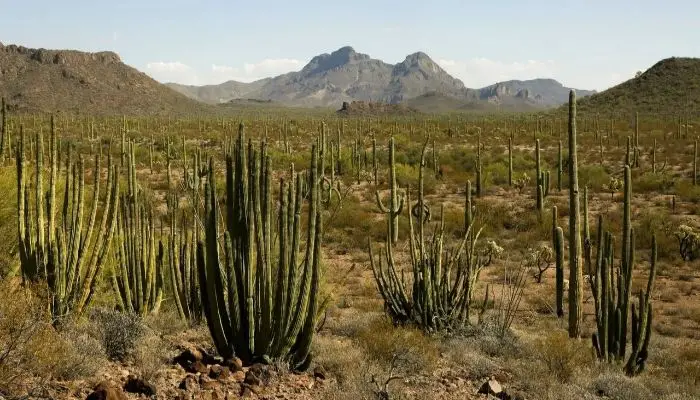
One of the more unusual national monuments in the nation is located in the far southern parts of Arizona, close to the Mexican border. Organ Pipe Cactus National Monument, which spans 516 square miles, is regarded as one of the outstanding examples of unaltered Sonoran Desert.
The national monument is the only area in the United States where the rare Organ Pipe Cactus is found in any substantial quantity, as its name suggests. In May and June, these interesting (and enormous) cacti only bloom at night. The vivid crimson fruits that emerge in early July will be more visible.
Thoughts of this sizable park being flat and dull due to its location in the desert are unfounded. The monument contains some remarkably tall mountains, the highest of which is Mt. Ajo, which rises to a height of 4,800 feet.
It’s a great place to hike because of the different terrain. The Bull Pasture hike, one of the top hikes in Arizona, is one of the best paths for those with the stamina. This three-mile round trek climbs a portion of Mount Ajo and provides breathtaking panoramas of the surroundings. Mexico is also visible in the distance.
8. Canyon de Chelly National Monument
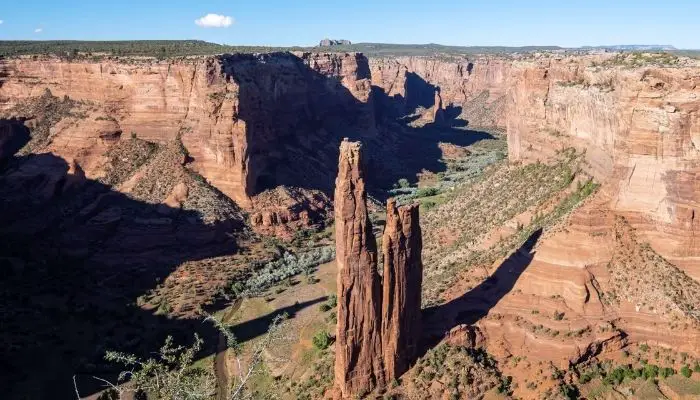
You might be wondering why you are in this remote location as you travel across the barren terrain north of Interstate 40 in the direction of Canyon de Chelly. But keep going because your perseverance will be amply rewarded once you arrive and begin driving along South Rim Drive.
In addition to the canyon’s stunning natural beauty, which was carved out by Chinle Creek and its tributaries, Canyon de Chelly is an interesting destination to visit because of the prehistoric cliff houses that are perched high up in the walls. According to archaeologists, people have been residing in the region for more than 4,000 years.
A trip along South Rim Drive including stops at White House Overlook, Spider Rock Overlook, and Junction Overlook is among the highlights of a trip here. You must reserve a 4WD trip with a local Chinle operator if you want to see the canyon floor.
9. Saguaro National Park
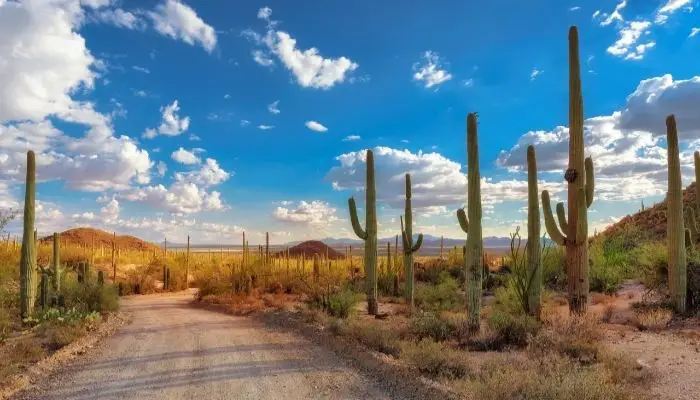
You shouldn’t miss Saguaro National Park, which is known for its enormous cacti. This national park, which is divided into two sections, one to the east and one to the west of Tucson, offers fascinating insights into the local desert’s vegetation and animals.
A great, brief scenic drive through the park’s eastern region passes by some of the biggest cacti, a fantastic vantage point, and the beginnings of a few quick hikes. If you decide to go on one of the treks, keep an eye out for long-eared jackrabbits, desert tortoises, and Gila woodpeckers.
The western region is more open, wild, and hilly. It’s difficult to realise you are so close to Tucson because the scenery is so amazing in its own right. Although the hiking is more difficult here, the breathtaking views are definitely worth it.
Keep in mind that the majority of the gravel roads in the western region might become extremely dusty. If you choose to camp, the lovely Gilbert Ray campground is tucked away amid the cacti and a very relaxing place to set up shop for a bit.
10. Grand Canyon

Grand Canyon National Park is the most well-known of all the national parks in Arizona, if not the entire country. Here, the Colorado River carves a mile-deep chasm into the soil, revealing a stunning array of vibrant rocks and unusual rock formations.
It therefore comes as no surprise that over six million visitors annually, mostly from the south rim, visit the Grand Canyon. They go to Mather Point Lookout to take a walk along the edge, the historical Geology Museum to learn about the rocks, and the interesting and distinctive Desert View Watchtower to climb. Those who have the strength to do so descend the Bright Angel trail to the side of the river, where they pitch their tents for the night.
Although it can get crowded during the summer because so many people visit, the park has recently taken steps to address some of the problems. If you have the opportunity and time, think about going in the fall while it’s still warm and there aren’t as many people around.

